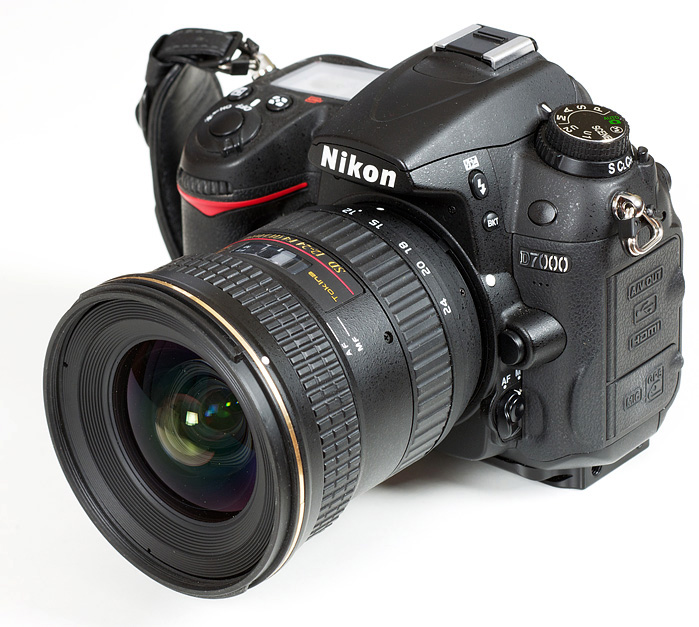|
Page 1 of 3

Review by Markus Stamm, published January 2013
Introduction
Tokina has earned a fair amount of reputation for its dedicated APS-C wide angle zooms. Most recently their hottest product has been the 11-16mm f/2.8 zoom, but in the years before they already took a large part of the market segment with the 12-24mm f/4 lens.
The latter lens has been slightly modified by Tokina, the AT-X 12-24mm f/4 Pro DX II now includes an integrated motor that makes it compatible with all current Nikon DSLRs, including the entry-level models. In addition, the coatings of the lens have been updated to offer better flare protection. The optical formular of the lens has otherwise remained unchanged.
In this review we will have a look at how the lens performs on our current DX test camera, the Nikon D7000.

One of the properties that make Tokina AT-X Pro lenses stand out from the crowd is their build quality, which is well above average. The lens feels very solid and there is no wobbling whatsoever. The finish is smoother than on earlier models and almost perfectly matches the finish of the test camera.
A classic Tokina feature is the one-touch focus clutch mechanism to switch between AF and MF by pushing/pulling the focus ring. This can be done in any focus position and works reasonably well, however it takes some getting used to. Many would probably prefer a simple switch instead.
The focus ring is only slightly damped and operates smoothly. The zoom ring is more stiff. Both rings rotate in the same direction as on Nikon lenses.

During zooming only an inner tube moves slightly, the physical size of the whole lens remains constant. The front element does not rotate, so using a polarizer is possible without any problems even with attached hood.
As already mentioned, the lens now features an integrated AF motor. Tokina uses a DC type motor, which generates a small amount of squeaky noise during operation. AF speed is not overly fast, but it doesn't have to be for a lens in this class.
The Tokina is a G-type lens, so it does not feature an aperture ring.
| Specifications |
|---|
| Equiv. focal length | 18-36 mm (full format equivalent) |
| Equiv. aperture | f/6 (full format equivalent, in terms of depth-of-field) |
| Optical construction | 13 elements in 11 groups, incl. 2 aspherical elements and 1 SD element |
| Number of aperture blades | 9 |
| min. focus distance | 0.3 m (max. magnification ratio 1:8) |
| Dimensions | 88 x 89 mm |
| Weight | 540 g |
| Filter size | 77 mm (rotating) |
| Hood | BH-777, petal-shaped, bayonet mount (supplied) |
| Other features | Lens reports distance (D) to the camera, integrated DC motor |
|